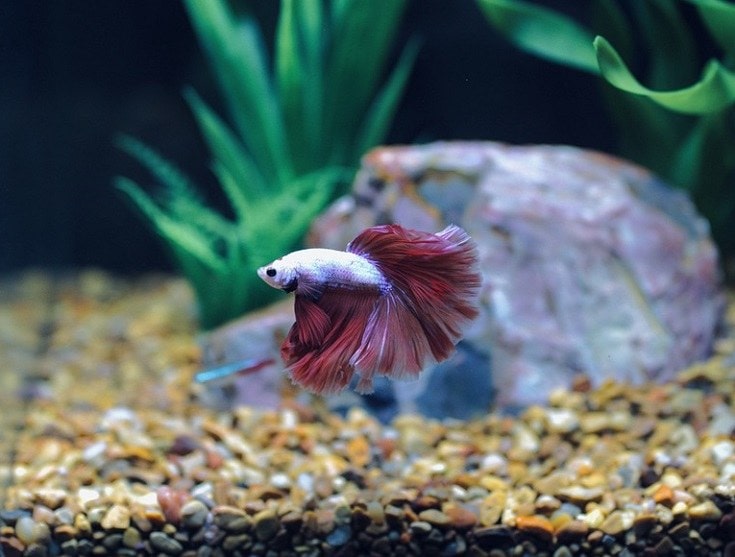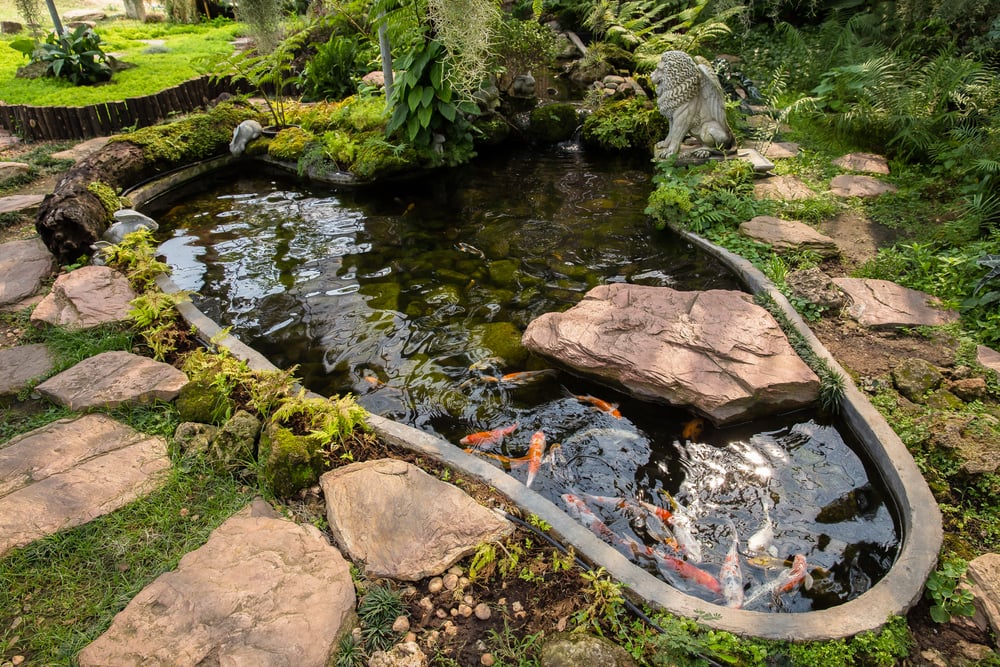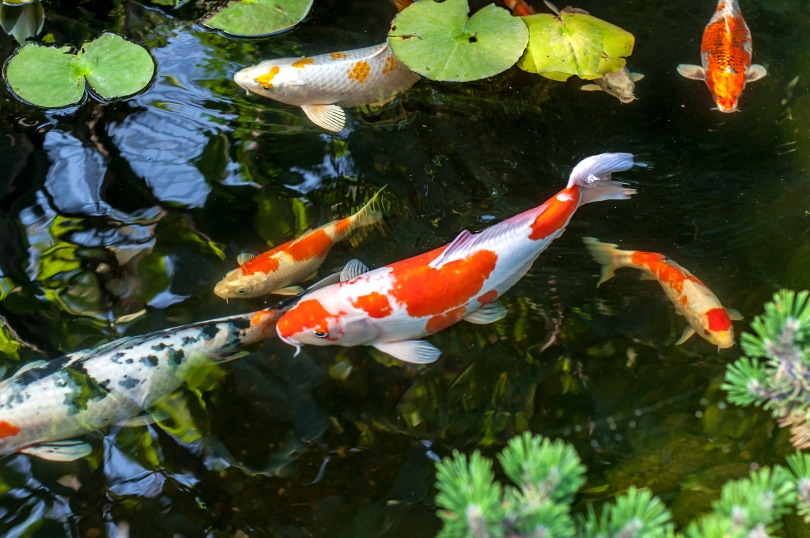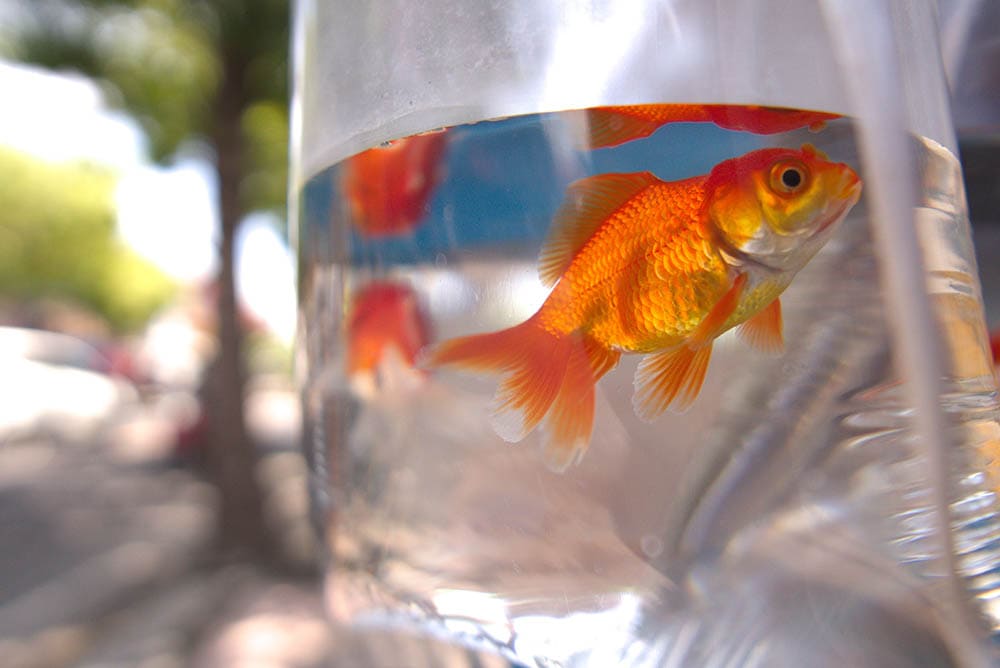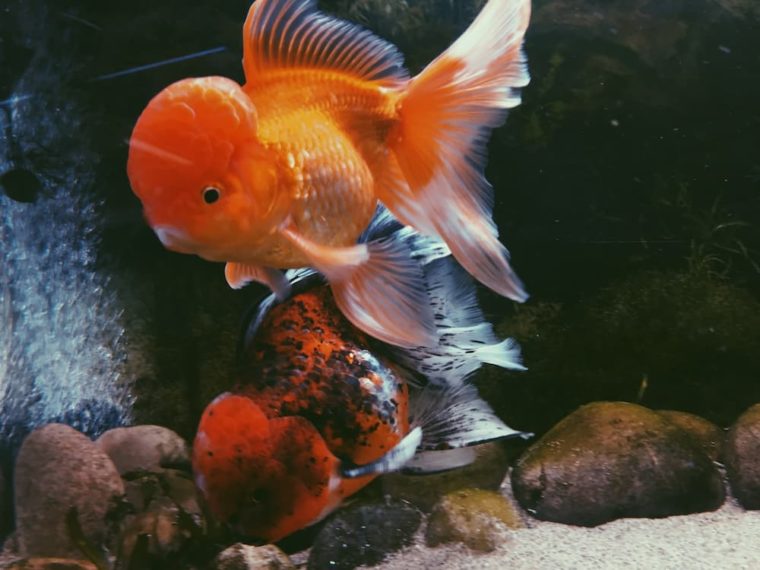
Goldfish are one of the most misunderstood fish in the aquarium hobby, but also the most commonly kept species of pet fish in the world. With hundreds of colors, varieties, and patterns to choose from, the goldfish has been a beautiful ornamental fish for over a thousand years.
There are plenty of myths and misconceptions that have been proven to be outdated surrounding goldfish and their care. Yet many people still believe these things to be true. This is why we have put together this article—to debunk these common misconceptions about goldfish and explain why they are either outdated or do not allow the goldfish to thrive in their environment.
Let’s debunk some common myths and misconceptions about these popular ornamental fish!
 The 10 Goldfish Myths and Misconceptions
The 10 Goldfish Myths and Misconceptions
1. Goldfish Can Be Kept in Bowls
Many fish keepers have made the mistake of putting a goldfish into a bowl, vase, or other small forms of aquaria when they first started. However, this is not an ideal living environment for a goldfish because it is simply too small. Goldfish are big fish that have a large bioload they release into the water. This means that a goldfish requires a good filtration system to help keep the water clean.
Most bowls do not support the large filter that goldfish will need and if it does fit, the goldfish will be left with less-than-ideal swimming space. The main reason goldfish cannot live in a bowl is that it does not support their size.
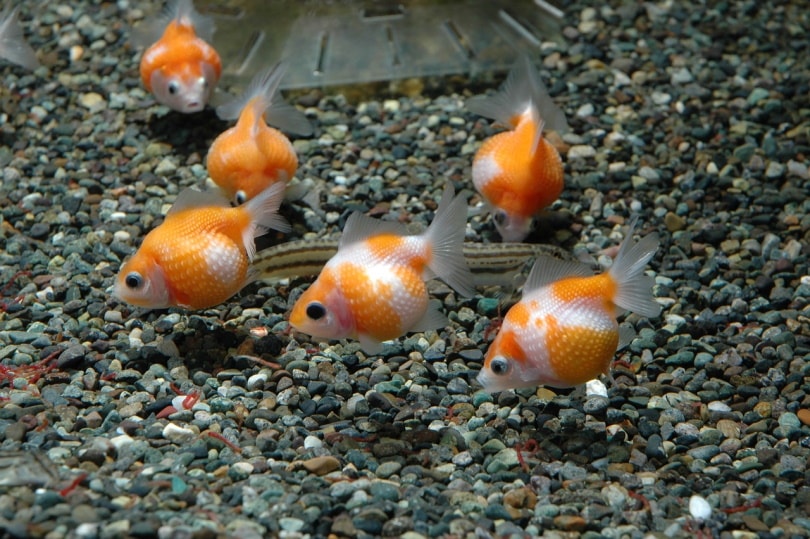
All goldfish species can grow over 6 inches in size, with some even reaching 12 inches as an adult. Even though the baby goldfish we see in pet stores are small enough to fit into a bowl, they do not have any room to grow or swim properly.
The water quality in a bowl can foul quickly, which will affect the health of your goldfish. Small volumes of water are not enough to dilute all of a goldfish’s waste, which means that your goldfish will have to swim in high concentrations of its waste, even if you manage to fit a filter inside.
Although a bowl can look aesthetically pleasing for a small invertebrate like shrimp or bladder snails, it is not the right type of aquarium for goldfish.
2. Goldfish Do Not Need a Big Tank
This is one of the most common myths about goldfish, and it stems from an extremely outdated method of keeping goldfish back in the mid-1700s.
This led to many other people choosing to keep goldfish in small tanks or other aquariums because, at the time, we did not know much about goldfish and their needs. Goldfish should be housed in a suitably sized tank that has enough space for them to swim, space for a filtration system, and enough space per goldfish in the tank. Since the goldfish have a large bioload and require enough space to grow to their full adult size, it is important to provide them with a large tank or pond.
Remember, bigger is better when it comes to choosing a tank for your goldfish.
3. Goldfish Are Tropical Fish
Many people still describe goldfish as tropical fish, but if this was true, then it would mean goldfish would thrive in tropical waters. Instead, goldfish are considered to be coldwater fish because their optimal temperature for growth, immunity, and reproduction is between 20 °C (68 °F) and 22 °C (72 °F).
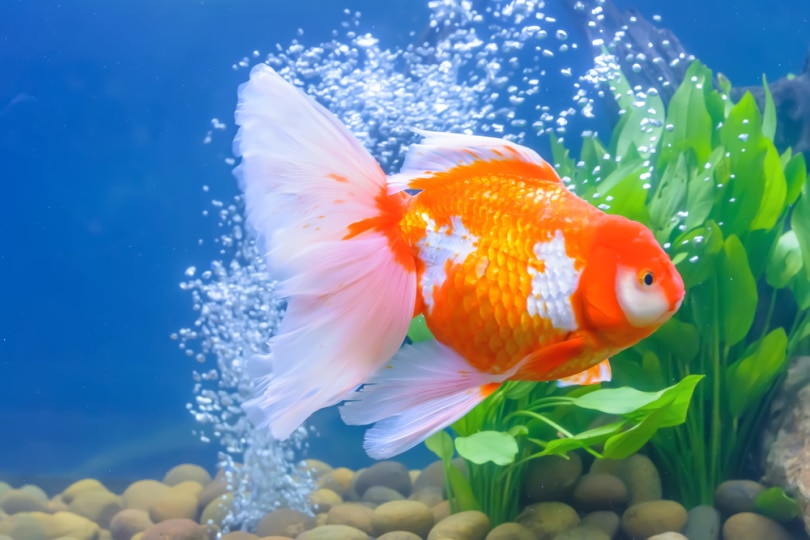
4. Goldfish Should Not Have a Heater
Even though goldfish do not need a heater like tropical fish do, there are some instances when a heater is needed for goldfish.
Heaters in general will not harm your goldfish, and they can be used to keep the temperature in the tank stable so that it doesn’t drop too low. Using a heater in your goldfish tank can also be a good idea if you are trying to raise the temperature slightly to help your goldfish fight off certain diseases, such as ich (also known as white spot disease).
If you do use a heater in your goldfish’s aquarium, make sure that you use a thermometer to keep track of the tank’s temperature fluctuations.
5. Goldfish Can Be Kept Alone
There is a common misconception that goldfish can live alone and do not need to be kept in pairs or groups of their species. However, goldfish are highly social fish that do best when they are kept together, either in a pair or in a group. Goldfish can get quite lonely, bored, and even stressed if they are kept alone because they feel comfort and safety from their species.

The number of goldfish that you house in an aquarium will depend on the size of both the goldfish and the aquarium. The larger the aquarium is, whether it is a large tank or a pond, the more goldfish you can keep together.
Fun Fact: It is illegal to house a goldfish alone in Switzerland!
6. Goldfish Do Not Live Long
There is still a misconception about goldfish’s life span which has led many people to assume that goldfish only live for a few months. This is not true, and goldfish can live for several years (usually over 10-15). Goldfish rarely live to their full lifespan in captivity because they usually die earlier due to illnesses, poor living conditions, and accidents.
The average lifespan for a goldfish is around 20 years because they are part of the carp family, which is known for having a very long lifespan.
There are even some goldfish that have too many overbreeding issues and their lifespan has been reduced to around 8 years, which is common for goldfish breeds like the Ranchu goldfish—which has been bred to not have a dorsal fin.
With the right care and environment, your pet goldfish can live for a long time.
7. Goldfish Have a Short Memory
The old-school belief that goldfish have a 3-second memory has been disproven by scientists. Goldfish are very smart fish and scientists have proven that their memory is so good that it can last for months, sometimes even more. Goldfish can remember the faces of the people who feed them even if the person hasn’t interacted with them for weeks.

Culum Brown, an expert in fish cognition at Macquarie University, said that this misconception about a goldfish’s memory comes from people’s guilt since most pet owners keep them in small and boring tanks. Goldfish can remember things for weeks, months and even years depending on how important the memory was to the fish.
8. Goldfish Are Not Intelligent
The intelligence of our aquatic friends is still not quite understood; however, scientists and experts in fish cognition and intelligence know that fish are more intelligent than we give them credit for. Goldfish are an example of one of the most intelligent fish in the aquarium hobby.
Their ability to problem solve, form bonds with their owner and other goldfish, remember places where they had a bad experience, and even remember faces have shown experts that goldfish are intelligent creatures. Goldfish are even smart enough to associate humans with food because they can remember that we feed them.
Some goldfish will even show anticipation and excitement when they are being fed and they respond to things in their environment, which means that they can respond to expectations of a meal. Fish expert Culum Brown has also found that thousands of studies conducted on goldfish have shown that they are intelligent and have excellent memories. Goldfish are so intelligent that they have seen goldfish use problem-solving skills and even repeat behaviors they have been taught.
9. Stunting Is Not Harmful to Goldfish
This is one of the most controversial misconceptions about goldfish in the hobby, and much of the way goldfish stunt is not fully understood, but there are a few reasons why it is not a good thing. Most fish (including goldfish) will grow to the size of their tank because larger bodies of water dilute a growth-inhibiting hormone that is more concentrated in smaller environments.
Goldfish can produce growth-inhibitory hormones, such as somatostatin. In nature, these hormones are used to reduce competition by suppressing the growth of other fish. In a tank situation, though, with the lack of regular water changes and a small aquarium, this hormone can build up and suppress the growth of the goldfish that produces it.
These hormones are generally not ideal for goldfish to live in. They would have anti-nutritional effects and are known to suppress the immune system. With sufficient water changes, a goldfish could theoretically keep growing in a small tank. However, without any means of measuring the hormone levels in the water, it wouldn’t be possible to know how frequently these water changes must be performed.

Stunting happens when an animal’s growth is stopped at a certain point in their lives, and they do not make it to adult size. Stunting has been proven to be harmful to goldfish.
The issue comes in for both ethical and reproductive reasons. There is no reason to purposely stunt your goldfish just to keep them in a smaller environment like a bowl.
Goldfish who have been environmentally stunted seem to not be able to reproduce properly, likely because their reproductive organs did not develop properly. Stunted goldfish who were placed in a more spacious home after they were stunted for years resume their growth and are able to breed, but this is not the case for all.
10. Goldfish Can Only Live in Ponds
With goldfish being such large fish and fast growers like their ancestors the common carp, many people assume that they are only pond fish. This is not true, especially for more sensitive goldfish breeds like fancy goldfish which are not the best option for ponds because they are not as hardy as stream-lined goldfish like comets or common goldfish.
Although a pond is a good option for goldfish, they can be kept in large fish tanks indoors. Some fully grown goldfish have been known to thrive in large tanks, but the key is to make sure that the tank is large enough to be comfortable for a fully grown goldfish. Not every goldfish keeper can house their goldfish in a pond, which is why you can turn a large tank into a suitable home for your full-grown adult goldfish without impacting their ability to thrive.
 Conclusion
Conclusion
Goldfish make wonderful pets for both beginner and seasoned fish keepers. With so many myths and misconceptions surrounding these fish, it can be difficult to determine what is true and what’s outdated or false information. We hope that this article has helped debunk the most common myths about goldfish and has taught you something new that you can apply to your pet goldfish.
Featured Image Credit: Hannah jones, Unsplash


 The 10 Goldfish Myths and Misconceptions
The 10 Goldfish Myths and Misconceptions